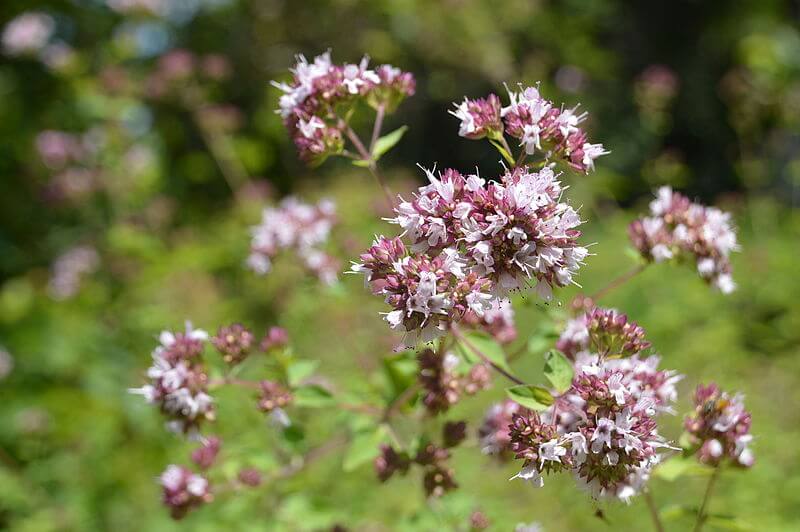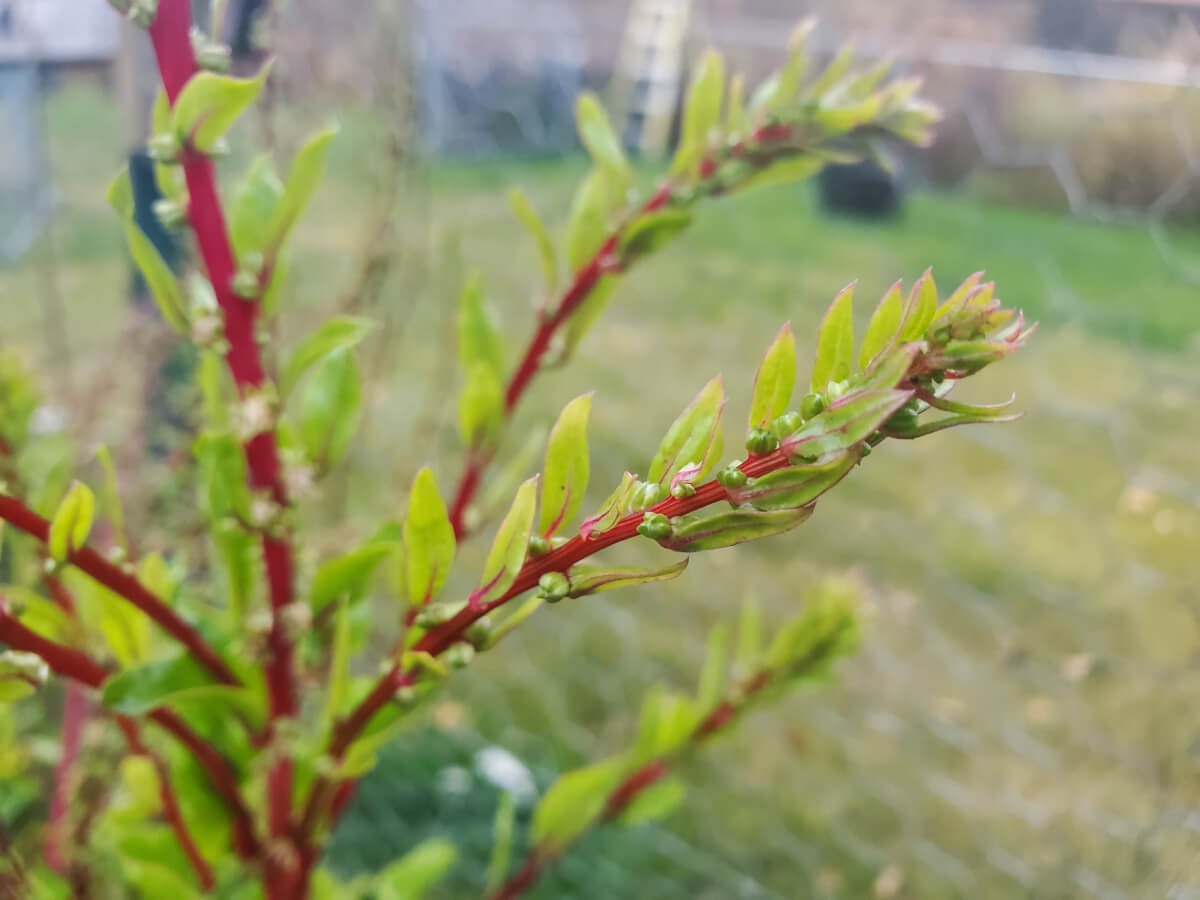When we started our subarctic gardening experience, we weren’t sure what to think about the midnight sun and how it might affect plants.
For the most part, there’s surprisingly very little difference between plants grown with “normal” day/night cycles and those grown under 24 hours of daylight.
But we have observed some differences. Some of our plants would flower particularly early under the midnight sun. This post explores that!
The Scientific Word Is Photoperiodism
This subject matter is, in a word, called photoperiodism.
Photoperiodism is the physiological response that an organism (in our case, a plant) has to varying levels of darkness, or night.
Most common garden plants are considered what is called day neutral. Meaning, they don’t have any particular preferences or requirements towards a certain amount of light or darkness to trigger flowering.
Conversely, a few plants are known to feature what is called “long day” or “short day” photoperiodism. This specifically ties into flowering processes and it’s how that particular plant “knows” when to flower.

A long day plant would tend to trigger flowering during the period of most sun exposure, the days around summer solstice.
A short day plant would trigger flowering during shorter days, typically those seen towards late summer and into fall.
Day neutral plants depend on getting to a certain stage of physical maturity to trigger the flowering process. That is largely why levels of sunlight or darkness don’t impact these plants.
What Is The Plant Measuring?
The curious might wonder what the plant is actually measuring.
The truth is, we don’t really know.
Most biologists think that it’s some sort of an alignment of the plant’s “body clock” and external light that it receives. When this “alignment” happens, the plant initiates the flowering process.

The process is likely related to specific proteins and mRNA that the plant encodes in response to light conditions.
For long day plants, it is thought that increased light may trigger an increase in flower-triggering proteins. Long exposures to light would greatly magnify the numbers of these mRNA proteins, reaching peak levels in the evenings.
For short day plants, it might be the general absence or reduction of particular mRNA proteins that are thought to trigger flowering. When the plant sees a certain level of reduction, that is thought to trigger flowering proteins to be created.
It’s honestly not entirely well understood and the overall scientific consensus has changed over time.
How Does Photperiodism Affect Northern Gardeners?
We have observed that some plants have a tendency to flower exceptionally early in the season.
It would seem that mere weeks after transplanting outdoors, we sometimes see flowering occur in particular plants.

To our recollection, this did not occur as quickly in our experiences in gardening at lower latitudes.
We immediately noticed a difference in experience!
At lower latitudes, we were typically transplanting much earlier in the season. As such, there was more darkness and less daylight at these times.
In the subarctic, and our typical last frost dates, there is all ready nearly 24 hours of available sunlight. The midnight sun is nearly in full effect.
Thus, the photoperiodism response is triggered almost immediately upon transplanting outdoors.
In particular, we have observed the photoperiodism flowering behavior in the following types of common garden plants:
- Arugula
- Bok Choy
- Cilantro
- Marjoram
- Mustard greens
- Oregano
- Spinach
- Summer Savory
Pretty much all of these plants provide us a bit of trouble since they flower so early in the season.
Are Short Day Plants Problematic In The North?
Well, yes. But it’s unlikely to be a problem for the northern gardener.
The reason is that there is a strong correlation between short day plants and general incompatibility in growing these plants in the far north.
Some examples of short day plants are:
- Kenaf
- Cannabis
- Cotton
- Mung Bean
- Rice
- Sorghum
- Soybeans
- Tobacco
Not only are these plants not commonly grown by the typical gardener, they are also not even commercially produced at higher latitudes.
We would be remiss to ignore Alaska’s contribution to cannabis flower. This largely found success at lower latitudes within Alaska, where photoperiodism is less of an issue. With modern-day genetic capability, auto-flower genetics (aka crossed with cannabis ruderalis), these genetics largely solve the short-day sensitivity issue this particular plant experiences, even in the far north.
When our days are shortest, that’s usually also the time when we have snow on the ground. Plants aren’t growing. There is just an inherent incompatibility and southern latitudes would be preferred for these plants.
How We Deal With Photoperiodism Issues Under The Midnight Sun
There’s really little we can do about this issue. Well, other than moving elsewhere.
For some things, we’ve just accepted that they are best consumed in the early season. We simply harvest them prior to flowering and accept what we get.

Some plants, like bok choy, spinach, arugula and mustard greens are particularly fast growers and are also rather cold tolerant. We’ve found that we can plant our spring crop and also a late sowing in early August to get a second harvest.
These later grown plants are more at risk of late season frosts, so the flowering problem is really a non-issue. We simply need to harvest them, when mature or semi-mature.
For the unfortunate herbs on this list (marjoram and oregano), we counter the photoperiodism issue by simply growing more plants. We increase our harvest through plant quantity as opposed to plant size.
We have to keep a sharp eye on both these herbs as they tend to flower quickly. Once we see the flowering process initiate, we immediately harvest the entire plant.
The Other Flowering Trigger, Heat!
Although not directly related to photoperiodism and long daylight, there are other triggers that can cause plants to start flowering.
A common one is heat. Several plants are heat sensitive and will base their flowering triggers on the amount of heat that they receive.
A few examples of heat sensitive plants are:
- Bok choy
- Broccoli
- Cabbage
- Carrots
- Cauliflower
- Chinese Cabbage
- Lettuce
- Radish
This is one of the main advantages of cold climate growing. We can often have great success over the summer with these types of plants since we commonly don’t experience “heat waves” that trigger these particular plant’s flowering.
However, the polarities of heat and photoperiodism can intersect in the far north, particularly when we see high northern temperatures and the aforementioned effects of photoperiodism. It’s really hard to pick these variables apart.
During heat waves and extended periods of warmer temperatures, it’s important to keep an eye on these heat sensitive plants.
To be honest, we’ve never had any issues in the far north with cabbage and carrots. It doesn’t likely get hot enough to trigger the heat response.
Growing Under The Midnight Sun
We hope this post has been helpful to learn more about why certain plants flower early under subarctic sun cycles.
It was very helpful for us to fully comprehend what was happening. It led to a deeper understanding of plant biology and helped us explain a phenomenon that was new to us.
As always, if you have any thoughts, comments or experiences that you’d like to provide, we’d love to hear your comments down below!
That’s All We Wrote!

Having a good time? We have an ever growing list of insightful and helpful subarctic & cold climate gardening articles, waiting out there for you!
- Cold Climate Gardening Basics 👉
- Growing Your Garden From Seed Indoors 👉
- Advanced Cold Climate Gardening Techniques 👉
- Plant Specific Cold Climate Growing Guides 👉
- Subarctic Perennial Food Forests & Foraging 👉
- Indoor Garden Lighting & Grow Rooms 👉
- Greenhouses & Temperature Control 👉
- Harvesting & Food Preservation 👉
- Solving Cold Climate Garden Problems 👉
- 1 Minute Reads On Tons Of Garden Topics 👉
FrostyGarden.com is 100% ad-free and we do not use affiliate links! This resource is voluntarily supported by our readers. (Like YOU!) If we provided you value, would you consider supporting us?

How could we find out about the various genetic factors and how organisms are affected by local conditions?
A lot of this comes down to experimentation and figuring it out. Your local community extension service often will document varieties that do particularly well. Also, we try to document these specifics in our specific growing guides, like for tomatoes, artichokes, peppers and so forth. Unfortunately, a lot of it comes down to trial by error and success.